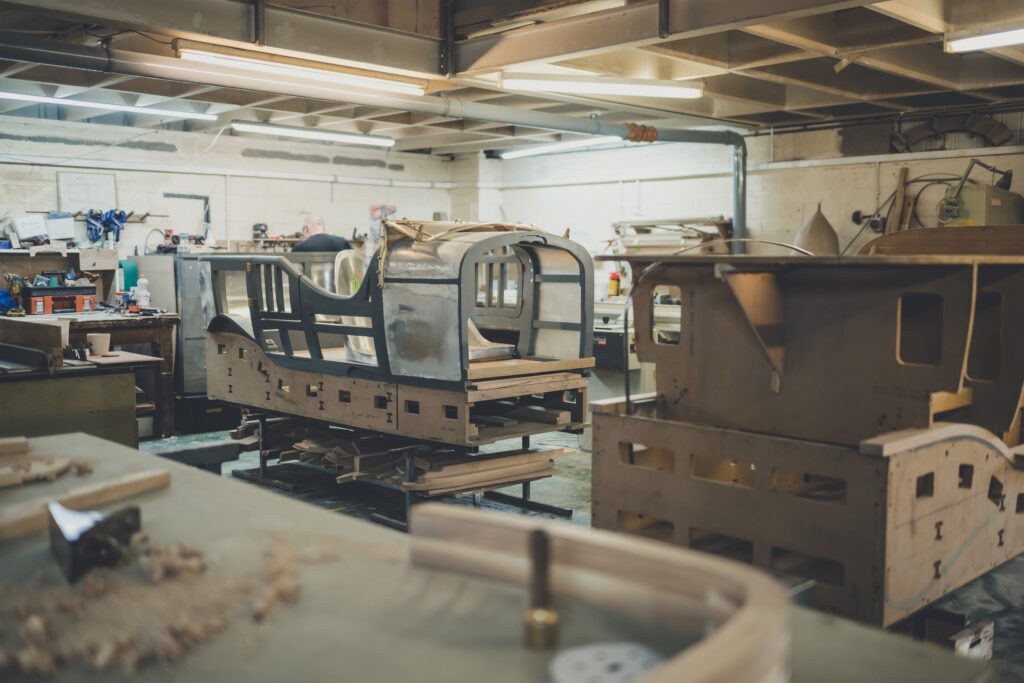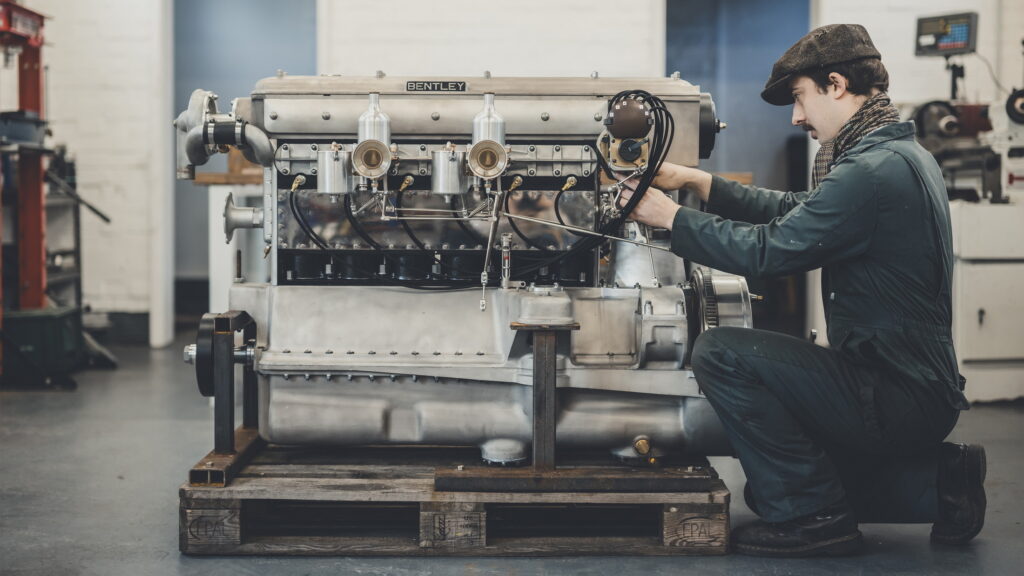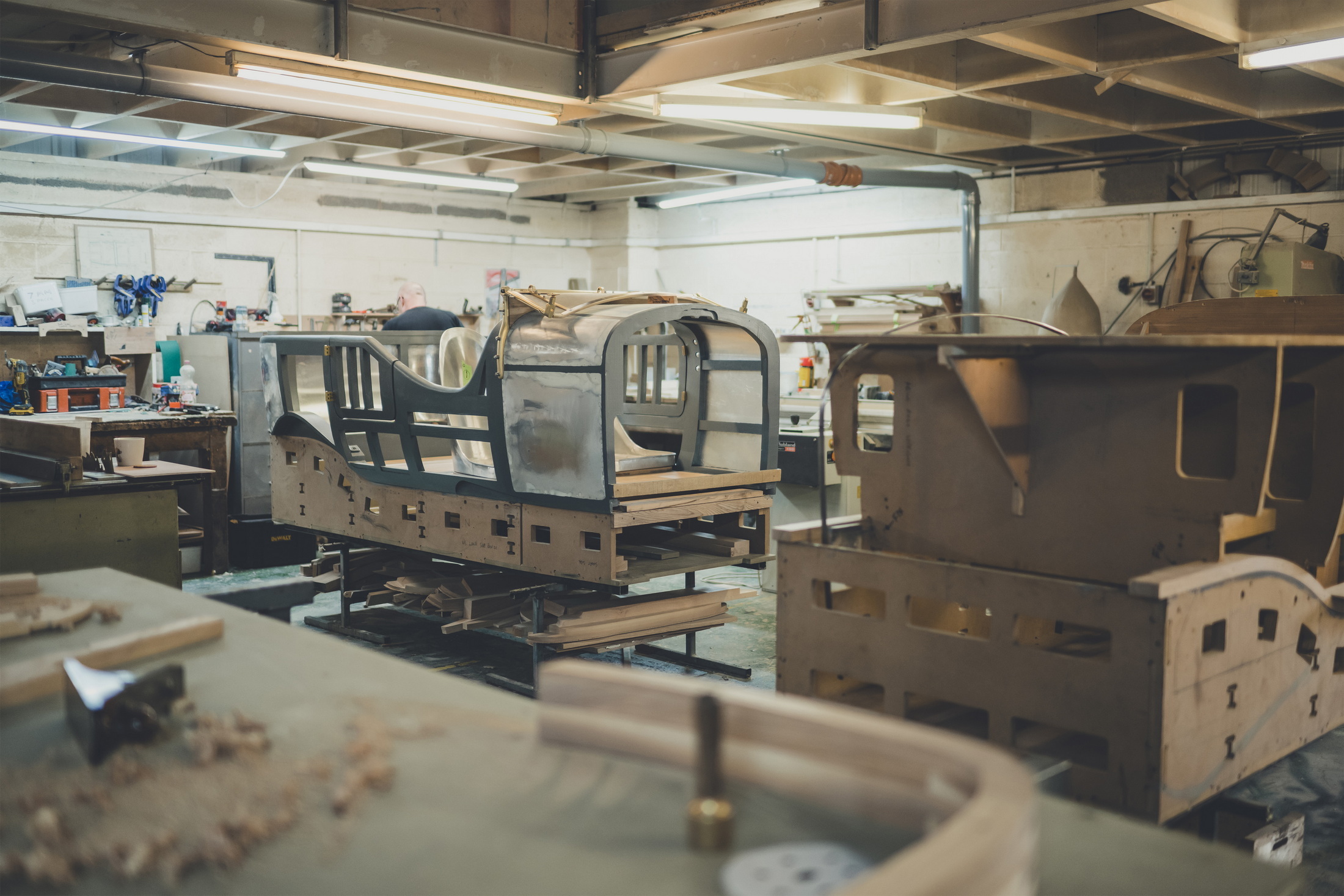The first new Bentley Speed Six to be built for a customer in 94 years is now taking shape. One of just 12 examples of the Continuation Series that will be made, the obsessively original car will be ready to hand over to its new owner in 10 months.
Built using period-correct materials and techniques, the Speed Six Continuation Series is a faithful recreation of the legendary car that Bentley made from 1928 to 1930. Twice the overall winner at Le Mans, the new vehicles require the help of quite a few partners.
Putting a 90-year-old car back into production is no mean feat, so Bentley turned to Portobello Engineering to make the chassis. The company had to develop more than 20 tonnes of tooling to press the 5mm (0.19-inch) thick steel that would form the chassis legs and cross members. Such was the team’s commitment to historical accuracy that they used BSF bolts, as would have been used at the time, not the metric bolts that are much more common today.
Read: The Bentley Speed Six Continuation Prototype Is Finally Ready For Its Public Debut

To create the frame, the automaker turned to Lomax Coachbuilders, whose specialists used traditional tools and techniques to hew the body out of ash wood. The frame was then sent back to Bentley, whose in-house personalization department, Mulliner, covers it in 25 meters of Rexine, a period-correct fabric that forms the car’s bodywork.
Bentley turned to Vintage Headlamp Restoration International for the headlights, while the radiator and gas tank were handled by the Vintage Car Radiator Company.
The car will be the result of months of testing on the prototype Continuation Series Speed Six, known as Car Zero. It was subjected to 40 hours of engine testing, as well as 6,214 miles (10,000 km) of durability driving on a variety of surfaces. Like the original car, Car Zero managed to reach of a top speed of 112 mph (180 km/h).
Bentley says it could have easily drawn more power out of the 6.5-liter inline-six engine, and by extension, a higher top speed, but chose to keep it period-correct for ultimate authenticity. On the dyno, the new engine made 205 hp (153 kW / 208 PS), just five (3.7 kW / 5.1 PS) more than the car was rated at in 1930.
Owners will be able to personalize their car. Bentley says that the customers (all 12 examples are already spoken for) will be able to select from a range of period-correct trims and finishes to make their Speed Six uniquely theirs.
Whether they then choose to race it against a train from Paris to London, as Bentley Chairman Wolf Barnato did in 1930, is up to them. However, they should be warned that although Barnato won his race, he was fined £160 (the equivalent of about £8,600/US$11,000 in today’s money) by the French police for his antics.






























